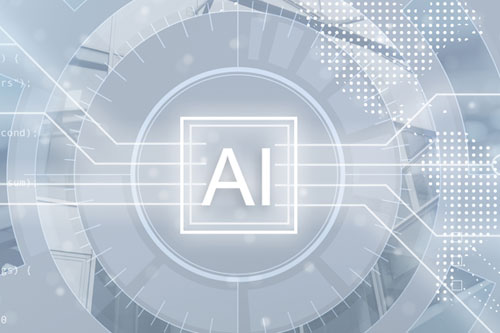Generative AI is the No. 1 AI solution being deployed. Three in 4 knowledge workers are already using AI. The supply of workers with AI skills can’t meet the demand. And supply chains can be helped by AI, too.
Here’s your roundup of the latest in AI research and analysis.
GenAI is No. 1
Generative AI isn’t just a good idea, it’s now the No. 1 type of AI solution being deployed.
In a survey recently conducted by research and analysis firm Gartner, more than a quarter of respondents (29%) said they’ve deployed and are now using GenAI.
That was a higher percentage than any other type of AI in the survey, including natural language processing, machine learning and rule-based systems.
The most common way of using GenAI, the survey found, is embedding it in existing applications. For example, using Microsoft Copilot for 365. This was cited by about 1 in 3 respondents (34%).
Other approaches mentioned by respondents included prompt engineering (cited by 25%), fine-tuning (21%) and using standalone tools such as ChatGPT (19%).
Yet respondents said only about half of their AI projects (48%) make it into production. Even when that happens, it’s slow. Moving an AI project from prototype to production took respondents an average of 8 months.
Other challenges loom, too. Nearly half the respondents (49%) said it’s difficult to estimate and demonstrate an AI project’s value. They also cited a lack of talent and skills (42%), lack of confidence in AI technology (40%) and lack of data (39%).
Gartner conducted the survey in last year’s fourth quarter and released the results earlier this month. In all, valid responses were culled from 644 executives working for organizations in the United States, the UK and Germany.
AI ‘gets real’ at work
Three in 4 knowledge workers (75%) now use AI at work, according to the 2024 Work Trend Index, a joint project of Microsoft and LinkedIn.
Among these users, nearly 8 in 10 (78%) are bringing their own AI tools to work. That’s inspired a new acronym: BYOAI, short for Bring Your Own AI.
“2024 is the year AI at work gets real,” the Work Trend report says.
2024 is also a year of real challenges. Like the Gartner survey, the Work Trend report finds that demonstrating AI’s value can be tough.
In the Microsoft/LinkedIn survey, nearly 8 in 10 leaders agreed that adopting AI is critical to staying competitive. Yet nearly 6 in 10 said they worry about quantifying the technology’s productivity gains. About the same percentage also said their organization lacks an AI vision and plan.
The Work Trend report also highlights the mismatch between AI skills demand and supply. Over half the leaders surveyed (55%) say they’re concerned about having enough AI talent. And nearly two-thirds (65%) say they wouldn’t hire someone who lacked AI skills.
Yet fewer than 4 in 10 users (39%) have received AI training from their company. And only 1 in 4 companies plan to offer AI training this year.
The Work Trend report is based on a mix of sources: a survey of 31,000 people in 31 countries; labor and hiring trends on the LinkedIn site; Microsoft 365 productivity signals; and research with Fortune 500 customers.
AI skills: supply-demand mismatch
The mismatch between AI skills supply and demand was also examined recently by market watcher IDC. It expects that by 2026, 9 of every 10 organizations will be hurt by an overall IT skills shortage. This will lead to delays, quality issues and revenue loss that IDC predicts will collectively cost these organizations $5.5 trillion.
To be sure, AI skills are currently the most in-demand skill for most organizations. The good news, IDC finds, is that more than half of organizations are now using or piloting training for GenAI.
“Getting the right people with the right skills into the right roles has never been more difficult,” says IDC researcher Gina Smith. Her prescription for success: Develop a “culture of learning.”
AI helps supply chains, too
Did you know AI is being used to solve supply-chain problems?
It’s a big issue. Over 8 in 10 global businesses (84%) said they’ve experienced supply-chain disruptions in the last year, finds a survey commissioned by Blue Yonder, a vendor of supply-chain solutions.
In response, supply-chain executives are making strategic investments in AI and sustainability, Blue Yonder finds. Nearly 8 in 10 organizations (79%) said they’ve increased their investments in supply-chain operations. Their 2 top areas of investment were sustainability (cited by 48%) and AI (41%).
The survey also identified the top supply-chain areas for AI investment. They are planning (cited by 56% of those investing in AI), transportation (53%) and order management (50%).
In addition, 8 in 10 respondents to the survey said they’ve implemented GenAI in their supply chains at some level. And more than 90% said GenAI has been effective in optimizing their supply chains and related decisions.
The survey, conducted by an independent research firm with sponsorship by Blue Yonder, was fielded in March, with the results released earlier this month. The survey received responses from more than 600 C-suite and senior executives, all of them employed by businesses or government agencies in the United States, UK and Europe.
Do more:



